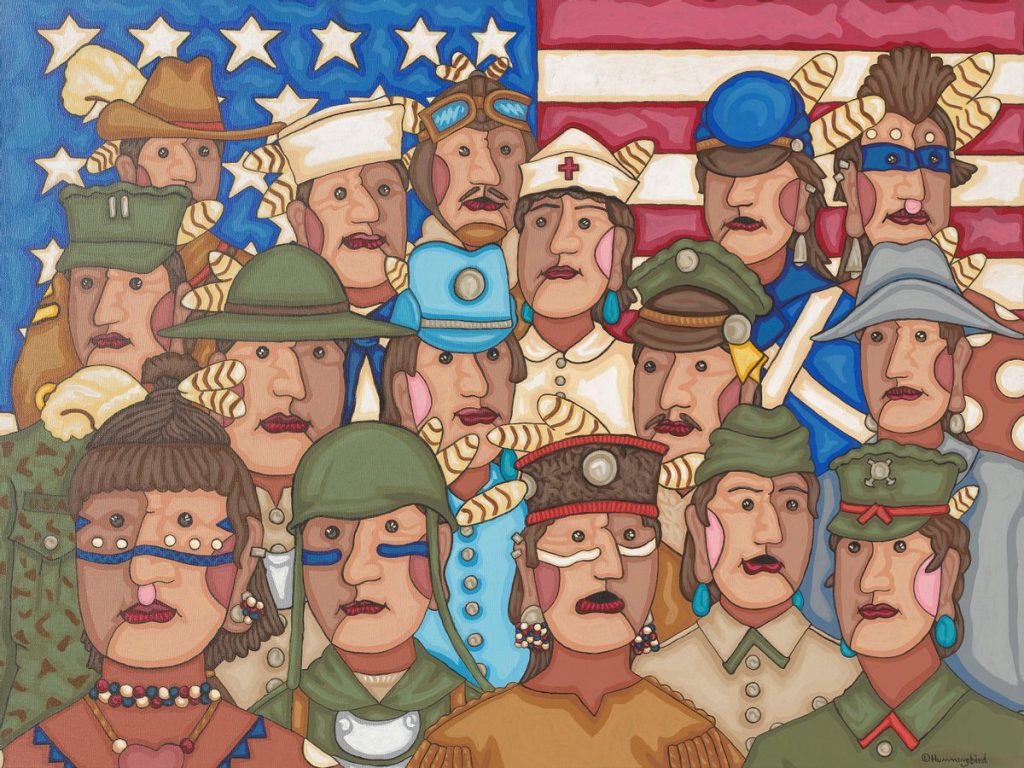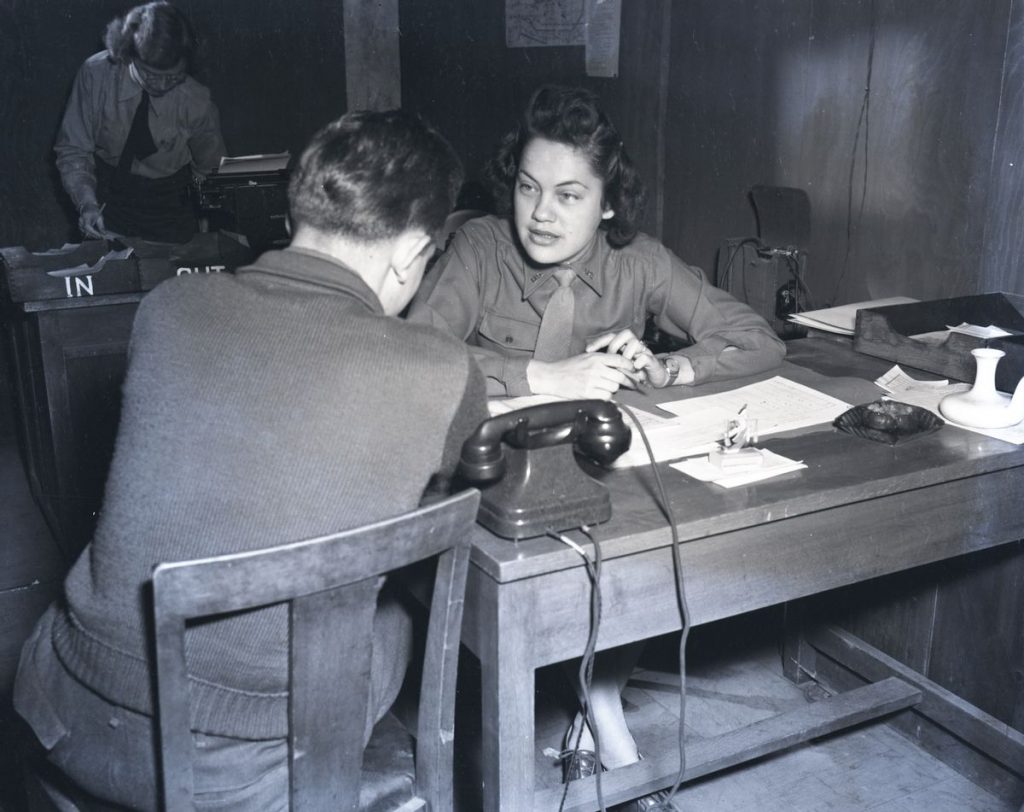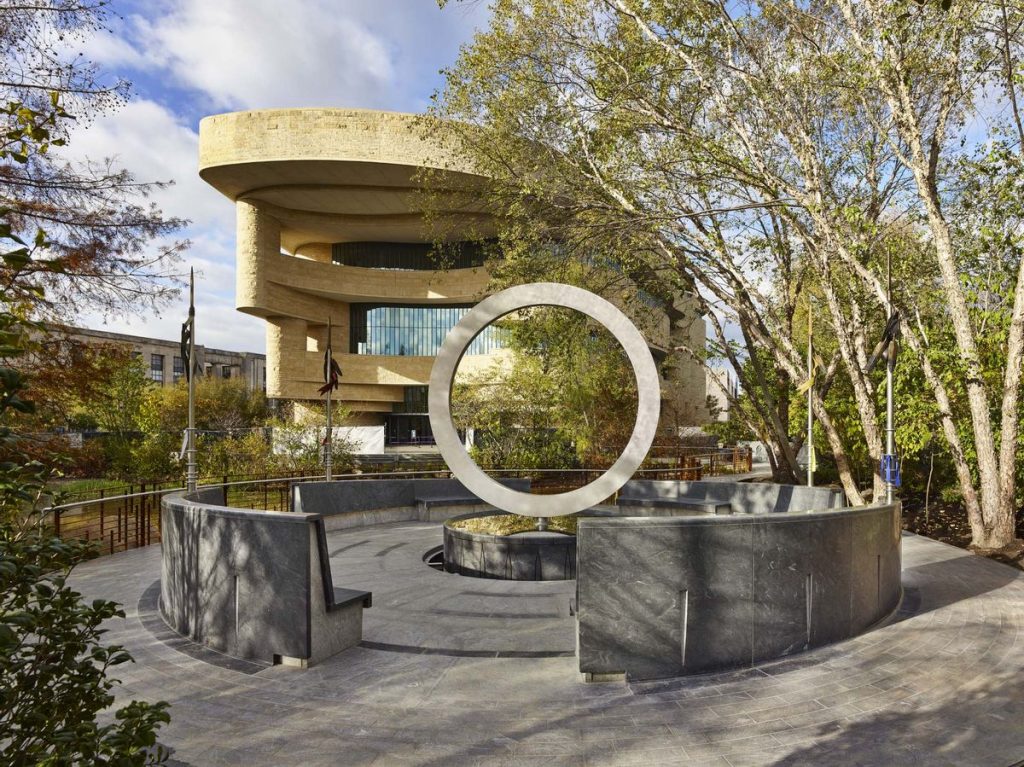https://americanindian.si.edu/why-we-serve/
Why We Serve presented by the National Museum of the American Indian.
I found out I am not only fighting for the little bitty piece of land I talk about, [or] my immediate family.
I found out I was fighting for all the Indian people, all the people of the United States.
Samuel Tso (Navajo), United States Marine Corps
Honoring all of the men and women who served in the United States Military isn’t just strictly reserved for United States citizens; members of Native tribes from across the country have given their lives to help defend our nation. Why We Serve seeks to honor the generations of Native Americans who have served in the armed forces since the American Revolution.

Anyone seeking to learn more about the heroes who served in our nation’s armed forces while also belonging to native tribes and nations. The site, and the book for which the exhibit is named for, are all to commemorate the National Native American Veterans Memorial in Washington, D.C. The information found throughout the site is not overly complex, using simple terms and easy to follow narratives. The main focus is to showcase the pride that indigenous people have for their generations of service to the military and the country, albeit at times being ironic.
For most Americans, we have the vague idea that Indigenous people certainly served in armed conflict and in service to the United States, but what most don’t realize is that they have also fought in all combat situations, from the very start of the Revolutionary War up to the conflicts in the Middle East. Native American’s are certainly a group of people who do not get the recognition they deserve from anywhere other than their own community. This exhibit strives to showcase the deserving generations of proud Indigenous veterans.
For many of Americans, patriotic pride comes from not only love of ones nation, but of the honor and glory of past generations service to the military and defending the home front. This is also true to Native Americans. Many of Native Americans today serve in our nations armed forces, and in the past generations, played a crucial role in victory in wars such as the Navajo Code Talkers. This virtual exhibit shows the gallery of portraits and biographies of native veterans along with educating about the history of Native American military service. Its strengths show in the great amount of first and second hand accounts of service along with artwork and photographs.
Methodology
The viewer navigates the site through scrolling down pages along with clicking on links to move further onto another topic, either by continuation of time line or by topic selection. The main menu gives a nice overview of the topic layout along with links to explore more topics or to the view the gallery, or watch the video.
The level of ease to find your way around the site is pretty high, the layout being pretty standard, and if you do get lost, there is a handy menu bar on the right side of the screen that pulls out a site map.
The topic information pages are formatted in a linear fashion due to their subject information, but that does not mean that the viewer has to strictly stick to going to the next page to find out what happens next. I found very little areas that would need improvement, given the fact that it does come from a museum belonging to the Smithsonian Institutes, the site seems to be pretty well formatted and ease of access is exemplary.
Design and Accessibility
The whole site throughout, is filled with photographs and images of paintings and drawings, almost all done solely by Native Americans or depicting them. The main home page has a patriotic background of blue with white text and red accents around the borders of pictures or alternating blocks of red and blue. The various topic pages have other colored backgrounds of greens, reds, blues, browns and beiges.
The exhibit, like mentioned previously, has images of photographs, prints, drawings and paintings primarily done by Native Americans and belonging to the collections at the NMAI or other Smithsonian Institutes.

Each of the images used throughout the site are captioned with not only the subject matter, but if there is a person in the picture, it gives what tribe/nation they belong to along with what collection it comes from. Usually following the caption of the image, a short biography is listed on the page in correlation to the time period of the topic page.
Conclusion
The exhibit demonstrated the beautiful honor and importance of Indigenous veterans and the courage that they had to serve for our nation. The site is laid out for easy access with a continuous color scheme and style formatting. Along with the links available for the topic pages, it also gives links to a gallery of images, to the video mentioned above, the book that the exhibit takes its name from and other resources that are very informative.
One thing that really stood out to me that I had not known previous to reading all of this, was the fact that there was no memorial to any of the Native American veterans of any of the foreign or domestic wars. Fortunately, Congress did task the NMAI with creating a memorial, which now stands out front of the museum, giving all Americans the opportunity “to learn of the proud and courageous tradition of service of Native Americans.”

Leave a Reply